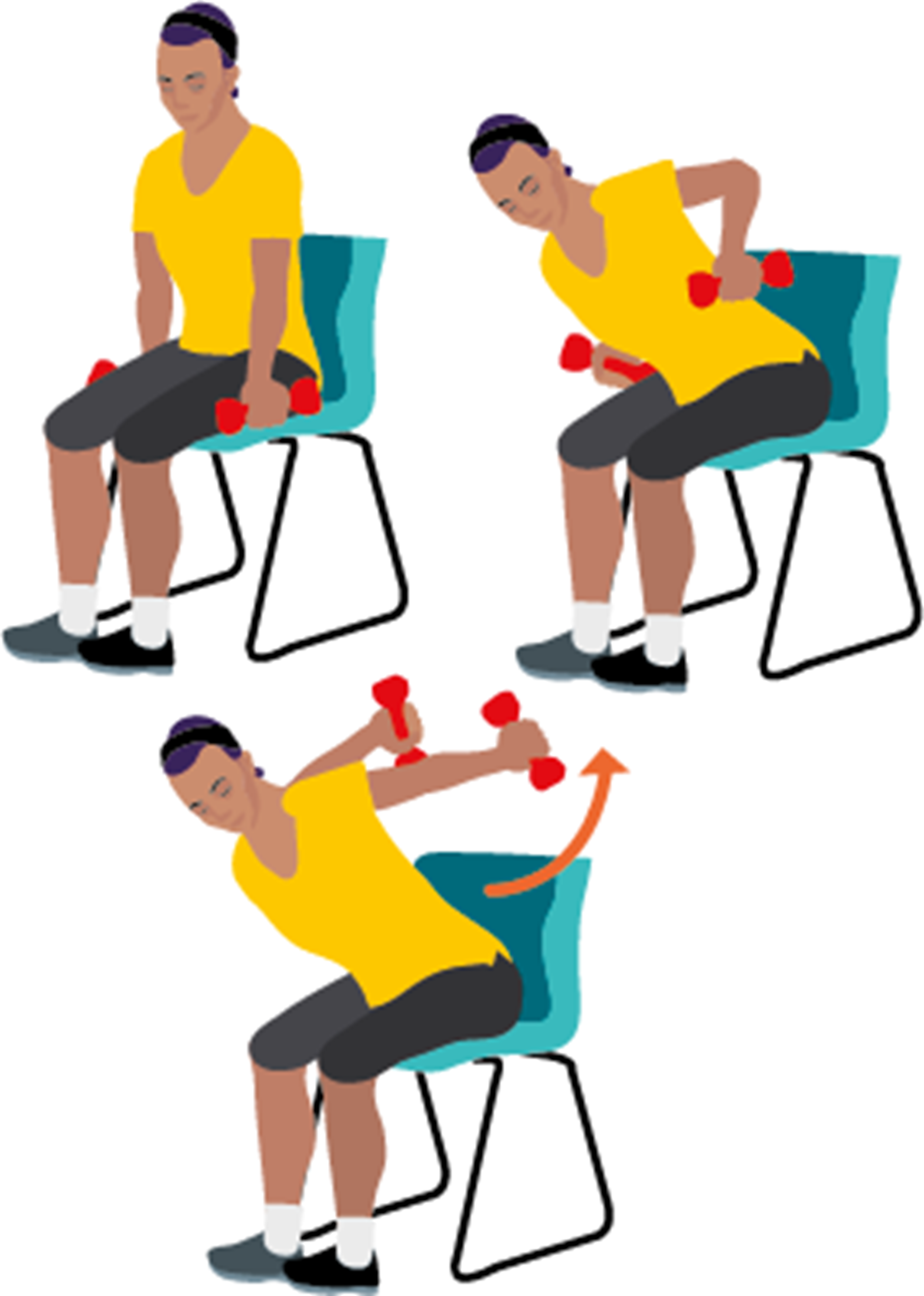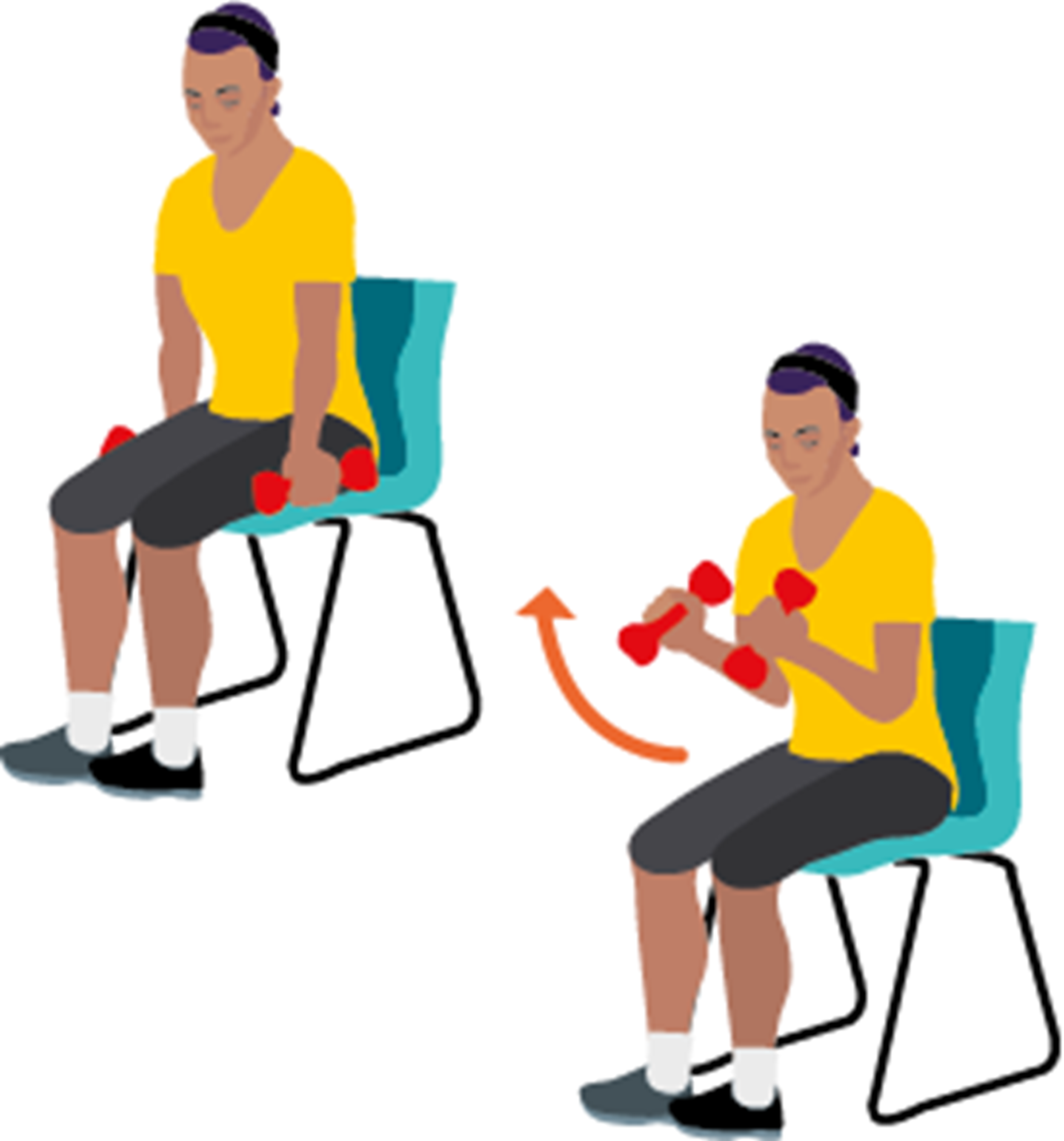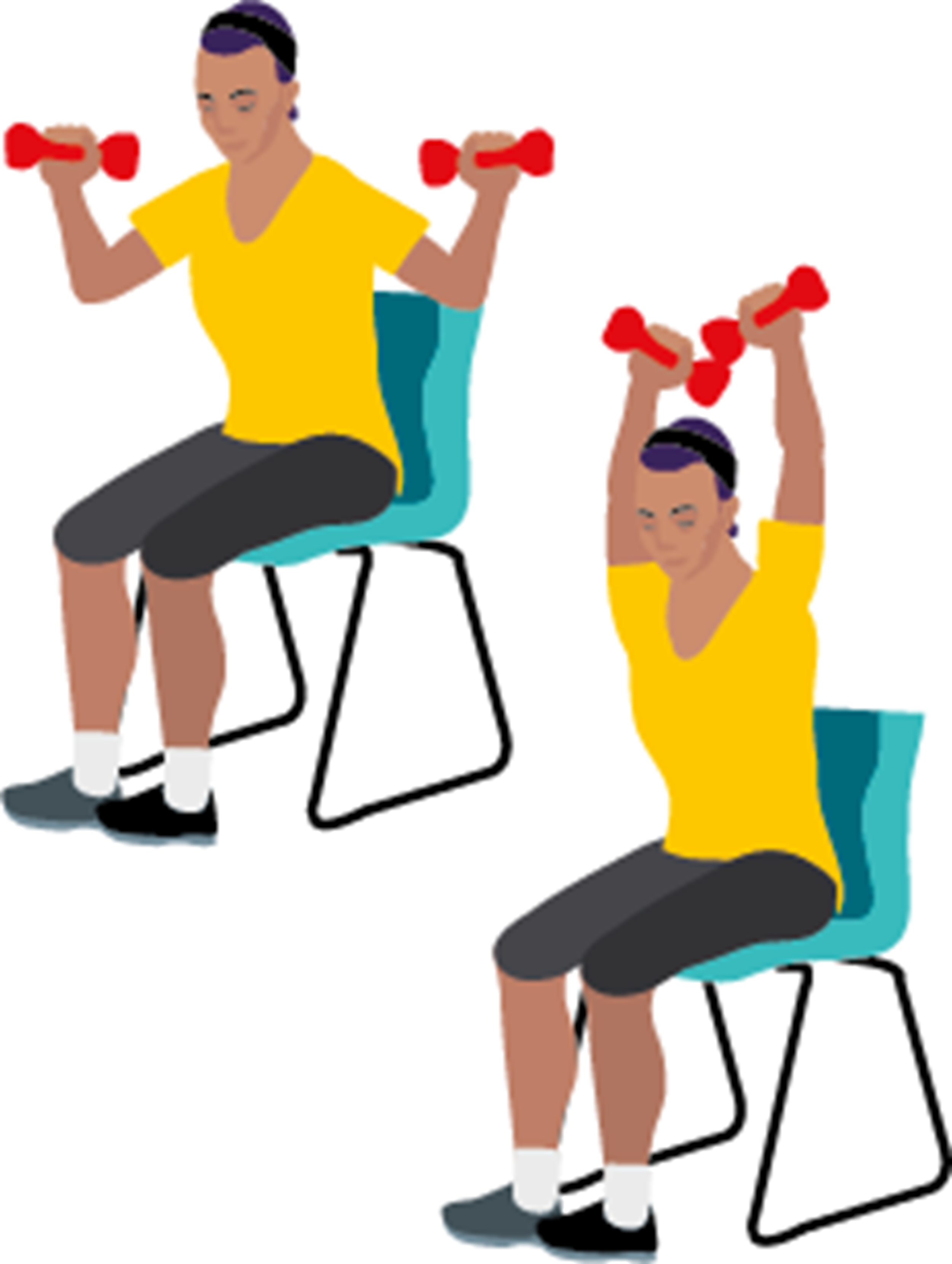8 Of The Best Seated And Chair Exercises For Seniors

Aging is a privilege, but one that unfortunately comes with a decline in our physical health. As we get older, our bones become less dense, making them more prone to breaks. Our blood vessels and arteries stiffen, increasing the risk of hypertension. And our muscles lose strength, endurance, and flexibility, causing reduced sense of proprioception and poorer balance, as well as increasing the risk of injuries.
While these changes are natural, they can be slowed down with a healthy lifestyle. It's never too late to get started either - there is no age limit on when we can increase our activity to improve our physical health!
If you are a senior looking to get more active, it can be hard to know where to start. A lot of exercise advice out there assumes a certain level of strength and coordination, which you may not have if you're new to exercising in later years.
Two areas that are good to focus on for reducing falls is exercises to improve balance, which we've looked at here, and exercising to increase strength. Seated exercises for seniors require less balance and core strength than exercises performed standing up, which makes them a good starting point to help build some strength.
PureGym Personal Trainer Yvonne Heiden has shared some of the best senior sitting exercises which can be done from the comfort of your own home. These exercises will help you to build up a good level of strength and endurance, and the confidence to progress to standing exercises (if desired).
Jump straight to seated exercises for the elderly, or download our PDF with printable chair exercises for seniors (pictures included).
The benefits of armchair exercises for the elderly
Fitness is for everybody, and a huge part of that is making exercise accessible no matter your ability. While some seniors may be happy joining the gym, some may be more comfortable exercising from their home. Seated exercises are perfect for those who don't have the strength or balance to stand on their feet for long periods of time but want to get the benefits of strength training, including:
Increased bone density, which reduces the risk and severity of osteoporosis
Maintaining and increasing muscle size and strength
Improved balance and coordination
Better posture
Healthier joints
All these factors help to lower the risk of falling in seniors as well as reduce the severity of falls if they do happen. They can also help to maintain independence and self-sufficiency and can decrease the symptoms of some age-related conditions.
8 seated exercises for seniors
It's important to work your full body when exercising to improve your physical health. These 8 exercises target all the major muscle groups -- they can be combined into one longer workout or split into two workouts depending on your level of fitness.
Yvonne recommends using dumbbells to provide resistance, which will help to increase your strength and endurance. As you get stronger, you can increase the weights of your dumbbells to further challenge and grow the muscles. Don't have dumbbells? You could use water bottles, cans of food -- anything that can be handheld to provide some weight.
For each exercise, aim to do 2-3 sets of the recommended reps.
1. Heel tap/ toe tap
This exercise strengthens and stretches the hamstrings, quads and calves.

- Sit with your glutes on the edge of a chair. You should have as much of your thighs off the chair as possible, while still feeling secure.
- Place both feet flat on the ground in front of you, with knees bent at 90 degrees.
- Balance a dumbbell on top of your right thigh, and then grip the sides of the chair to help stabilise your upper body.
- Keeping your left foot flat on the ground, slowly extend your right leg forward and tap the floor with your heel. Hold for a second.
- Slowly lift your right thigh and bend your knee to bring your toes back underneath the chair. Tap the floor with your toes and hold this position.
- This is one full rep. Repeat 10 times before switching legs.
2. Rows
Rows predominantly target your middle back, but also work your lats and arms to a slight degree.

- Holding a dumbbell in each hand by your sides, sit in your chair with a neutral spine (slight arch in the lower back, chest up, facing straight forward).
- Maintaining a neutral spine, hinge forward at your hips so your upper body is at a 45-degree angle to your thighs. Your arms should fall straight down from your shoulders.
- Slowly pull your elbows behind your back (or as far as your mobility allows) while bending your elbows to bring your wrists towards your hip crease. Your forearm and upper arm should end in a 45-degree angle from each other.
- Squeeze your shoulder blades together and hold for a second before lowering your arms.
- Repeat for 10 reps.
3. Seated good mornings
Seated good mornings strengthen both your core and lower back.

- Sit tall in your chair with your feet firmly on the floor, slightly wider than hip width, holding a dumbbell in each hand.
- Rest the dumbbells on top of your shoulders. Keep hold of them in this position throughout the exercise.
- Engage your core and, maintaining a strong and spine, slowly lean forward towards the chair between your legs. Only go as low as you can while keeping a neutral spine.
- Focus on using your back muscles to pull your upper body back upright.
- Complete 10 reps.
4. Seated tricep kickbacks
These work your triceps, which are located on the back of your upper arms. Strong triceps help to stabilise the shoulders and elbows.

- Sit tall in your chair, holding a dumbbell in each hand.
- Lean forward so your upper body is around a 45-degree angle to your thighs, making sure to maintain a long, neutral spine.
- Bend your elbows at a 45-degree angle and pull them back behind your back (if mobility allows).
- Drive the dumbbells behind your back by extending the elbows fully. Your upper arm and torso should remain completely still.
- Hold at the top for a second before slowly returning back to the starting position.
- Repeat 10 times.
5. Bicep curls
Biceps help with multiple functional movements, from picking up a glass of water to closing the door.

- Sit tall, a dumbbell in each hand with your arms fully extended down by your side.
- Slowly bring the dumbbell up towards your shoulders by bending your elbows. Keep your upper arms and elbows still by your sides to avoid swinging the dumbbell.
- Slowly return the dumbbells back to the starting position and hold for one second. This is one rep.
- Repeat for 10 reps.
6. Leg extensions
Leg extensions strengthen your quads, which are the muscles located on the front of your thighs. These muscles help to stabilise the knees and support knee extension and hip flexion.

- Sit tall on the edge your chair, place both feet together on the floor, and balance a dumbbell on both feet.
- Hold on to the chair for balance, then extend your knees to raise your legs as high as you comfortably can, focusing on squeezing the quads to drive the movement.
- Hold at the top for a second before lowering back down.
- Repeat for 10 reps.
If you find using both legs is too difficult, keep one foot flat on the floor and balance a dumbbell on the other foot and do one leg at a time.
7. Seated toe and calf raises
This exercise strengthens your feet and calves, which will help to improve your balance as well as increase your endurance for standing and walking.

- Sit tall near the edge of your chair with your feet on the floor around hip-width apart.
- Rest a dumbbell on each thigh, holding on to it for support.
- Raise your toes up towards the ceiling, going as far as comfortably possible, and hold for a second.
- Return your feet back to flat on the floor, and then raise your heels off the ground, focusing on squeezing your calves to drive the movement. Hold for a second.
- Alternate between the two movements for 10 reps.
8. Seated shoulder press
This move targets your shoulders and helps to strengthen your core. It translates to increased endurance for real life movements which require overhead strength, such as putting items away in cupboards.

- Holding a dumbbell in each hand, sit in your chair, feet flat on the floor, with a neutral spine and strong chest.
- Raise the dumbbells to the side of your head. Your elbows should be in line with your shoulders and bent at a 90-degree angle.
- Push your hands straight up by extending your arms, making sure to keep a slight bend in your elbow.
- As you reach the top of the movement, bring your arms slightly closer together above your head.
- Slowly return to the starting position and repeat for 10 reps.
You can repeat this workout 2-3 times a week, just make sure to leave a day's rest between each workout. Find more seated arm exercises for seniors here, resistance workouts for older adults hereor a chair yoga flow for seniors here.
If you're ready to progress to the gym try out these exercises for seniors or discover some of our favourite pieces of gym equipment for older adults here. Alternatively, you can find more exercise advice for seniors here.


